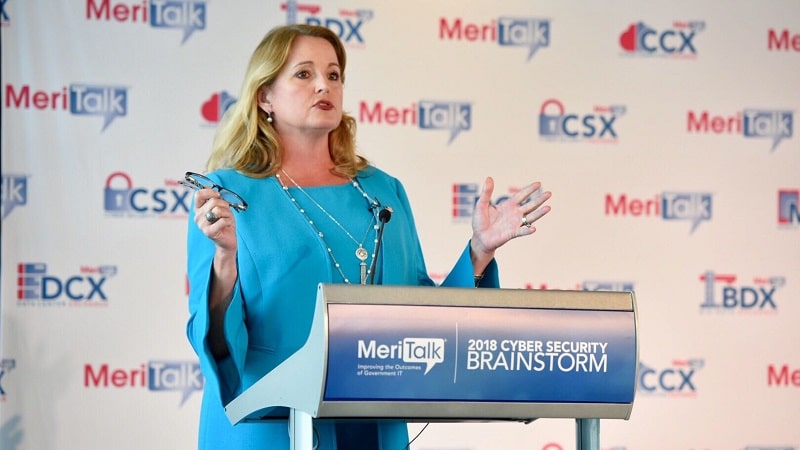
Two former Federal CIOs gave a strong thumbs-up today to the latest round of major Federal agency grades issued in the tenth version of the FITARA Scorecard issued by the House Oversight and Reform Committee.
The best way to make sense of the multicolored scorecard – which grades major Federal agency performance across a variety of IT modernization and related policy categories – is to view the FITARA Dashboard, and watch MeriTalk’s FITARA video.
“My overall reaction is it’s great to see improvements – more As and Bs, and no Ds and Fs,” said Suzette Kent, who left the Federal CIO position just last month.
Tony Scott, who served as Federal CIO from 2015 to 2017, shared that sentiment. “Agencies are making progress, and that’s good news, I think that’s great,” he said. “And I think the scorecard also is becoming more relevant as it has changed over time, and seems fair to me.”
Kent, who earned rave reviews from the Federal CIO community for her leadership during the coronavirus pandemic, reminded about the trying conditions under which some agencies were able to improve their FITARA grades – or otherwise maintain good marks – on the latest scorecard.
“One takeaway I hope many people have is that agencies were able to deliver these kinds of results during their COVID responses, which required extraordinary measures from almost every one of them, and they were still able to continue to improve on basic mission operations and technology objectives while doing that,” she said in an exclusive interview with MeriTalk.
“I think it’s a great reflection on the focus, the talent, and the urgency that agencies have brought to the task,” she said. “In some cases agencies had to do different things to get the information that underlies the scorecard data, it was not business as usual. The fact they were able to do this is a testament to the strategic work and the right kinds of milestones already in place.”
More Focus Needed on Citizen Service
Both former Federal CIOs quickly turned their focus to how agencies can improve further, and how Congress can track that progress through FITARA grading.
“What I’d like to see is tracking progress on modernizing government websites,” Scott said.
“One of the things that I think COVID exposed is that in some cases it’s still hard to find the right information on agency websites,” he said. “There’s an ease of use and user interface set of issues that I think really needs to be dealt with. How we serve citizens in this digital government era I think is something that needs even more emphasis than perhaps it’s gotten in the past.”
“I’d love to see modernizing the customer interface and ease of use being something that’s not only on the scorecard, but with a lot of emphasis on it,” Scott said.
“The [website] standards are there, but not all agencies comply with it,” he said. “There are all kinds of standards in place, but I don’t think that there’s necessarily been the amount or external pressure or motivation, let’s say, as there needs to be for agencies to comply. It’s not just the top-level domains, it’s all the subsidiary sections. Some agencies are quite large, and while the top level is fairly compliant with standards, as soon as you peel away that top layer of the onion you get to some that are still pretty dismal.”
Kent similarly set her sights on the goal of improving citizen service.
“When you look at the number of agencies that are showing a high level of accomplishment in certain areas of the scorecard, when you have the majority getting A’s in some categories, it gives us the opportunity to ask where the spotlight should be aimed next,” she said, adding, “We should always be in dialogue about raising the bar.”
“As a citizen, I feel even more passionate about one of the things that I talked about when I was in government, and that’s something that measures our progress toward improved service delivery – whether that’s digital or whether that’s a quality measurement of mission outcomes, or some other kind of measure that gauges are we doing what matters most to those we serve.”
“Agencies already have some idea about what their goals are for digital transformation,” she said. “There may be some work to do in what the measurement might look like. There are some other things around assessing citizen satisfaction that are probably further away, but that doesn’t mean we shouldn’t work on some long-term goals to figure out how to get there.”
“Maybe it’s a strategic discussion around when we transition to new scoring categories, and what is the right timeline for that.” Kent said. “Is it when 80 percent of agencies make an A grade in a category, and then we start to transition to a new category? For example, the response to the coronavirus gave us a really clear indication that we needed to be moving faster on digital and mobile capabilities.”
“Is there one category that’s ready for prime time on the next scorecard,” she asked. “Not likely, but there are ones that have been in discussion, and is there an opportunity to evolve the discussion? I think the CIO Council would be happy to continue that discussion.”
